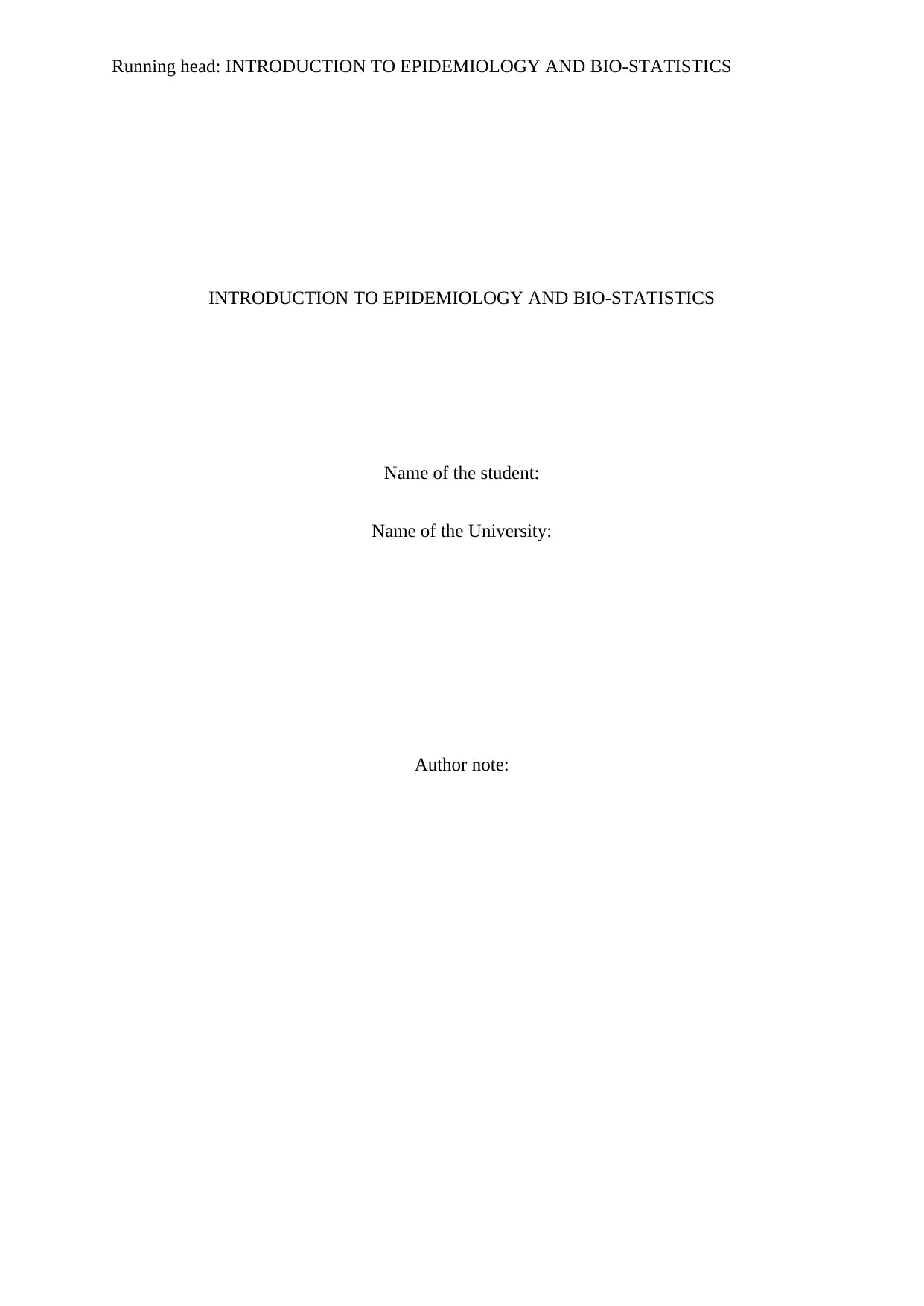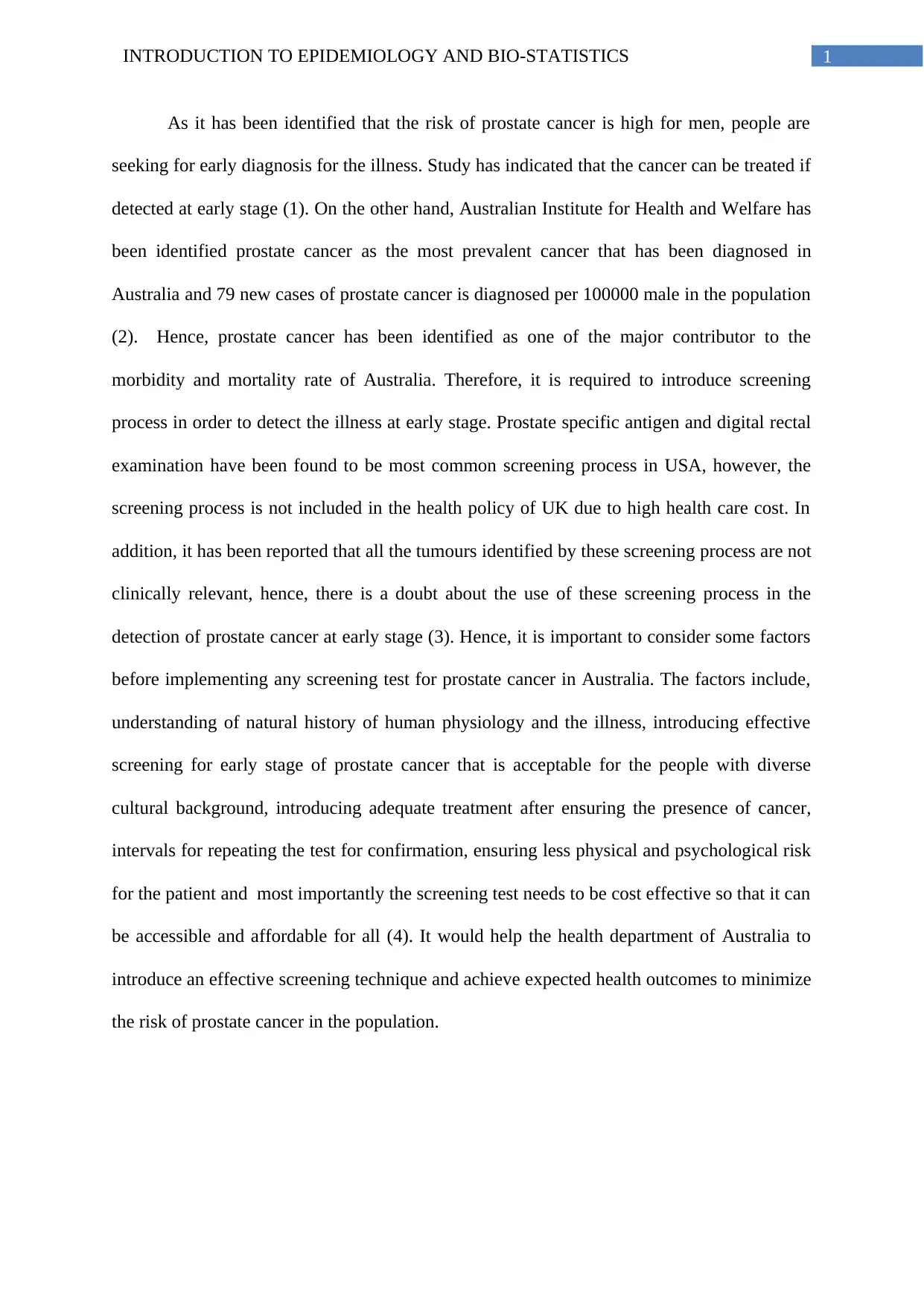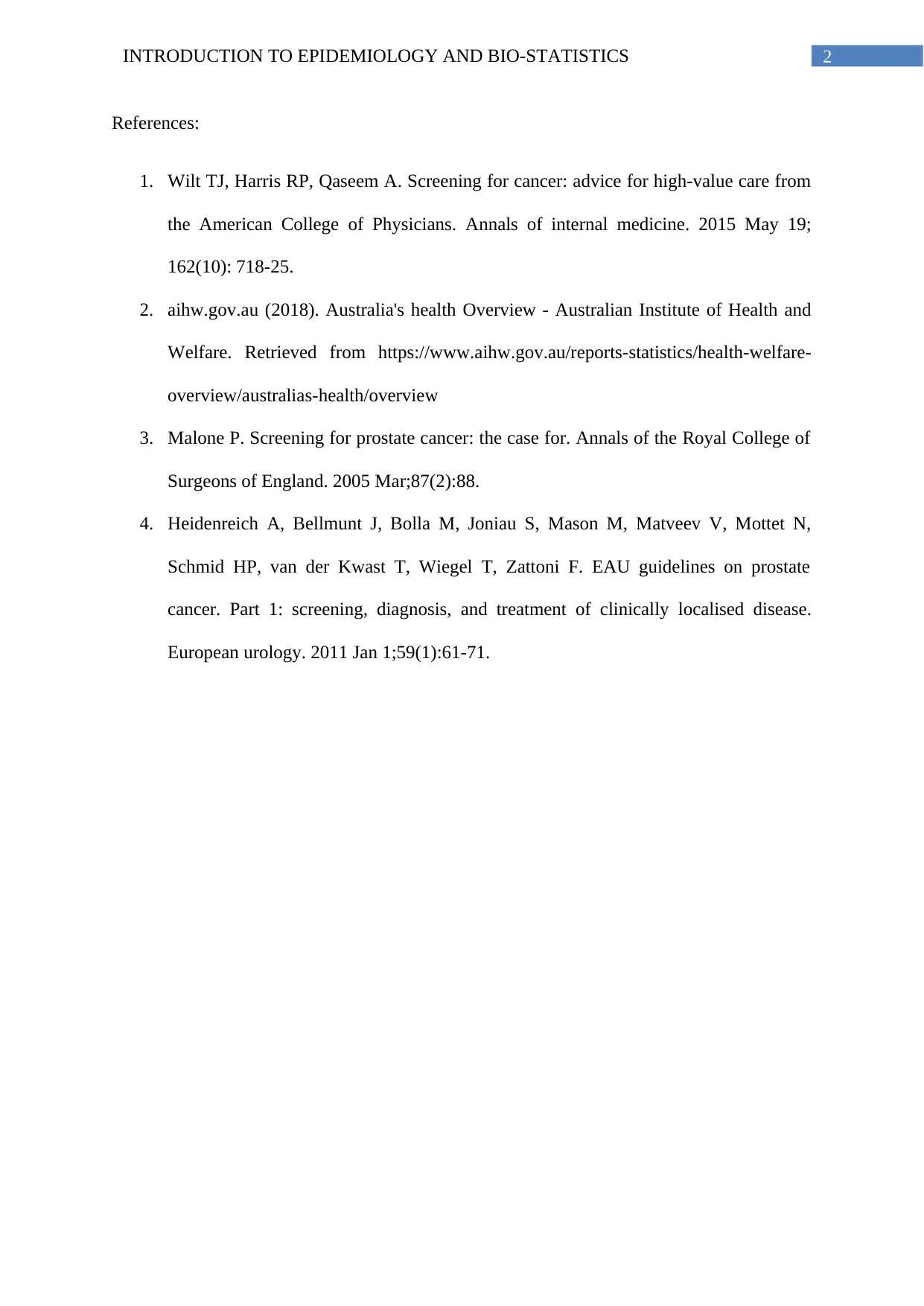University of [University Name] - Prostate Cancer: Epidemiology Report
VerifiedAdded on 2023/06/03
|3
|561
|409
Report
AI Summary
This report focuses on the epidemiology of prostate cancer, particularly within the context of Australia. It highlights the prevalence of the disease and the importance of early detection. The report discusses the screening process, including the use of prostate-specific antigen and digital rectal examinations, while also addressing the limitations and considerations for implementing effective screening programs. It emphasizes the need for a comprehensive approach that considers the natural history of the disease, cultural sensitivities, treatment availability, and cost-effectiveness. The report references key sources and provides insights into the challenges and opportunities related to prostate cancer screening and management, aiming to inform health policy and improve patient outcomes. The report stresses the need for a cost-effective approach to make screening accessible to all. The report also discusses the need to understand patient's physical and psychological risks.
1 out of 3










![[object Object]](/_next/static/media/star-bottom.7253800d.svg)